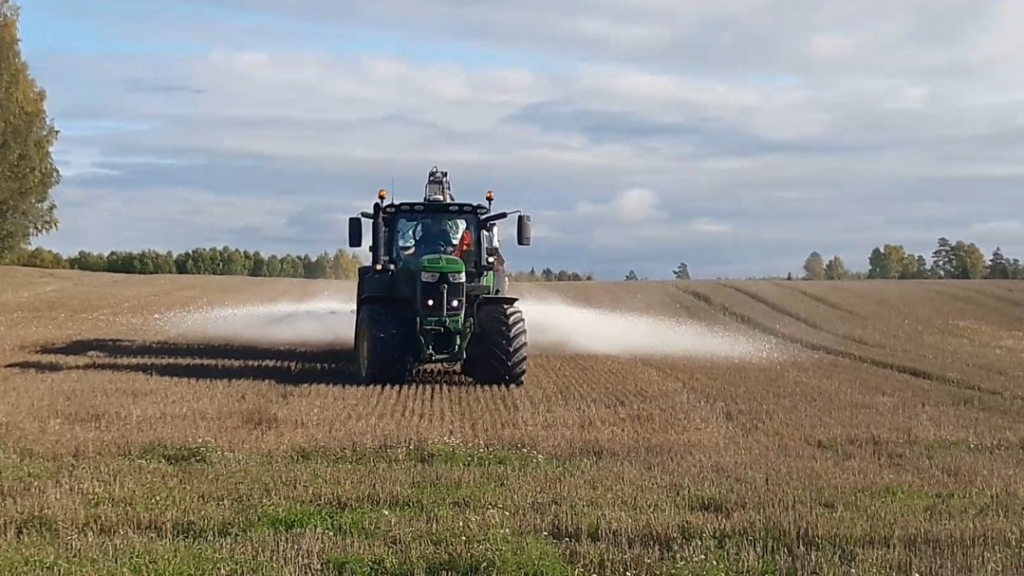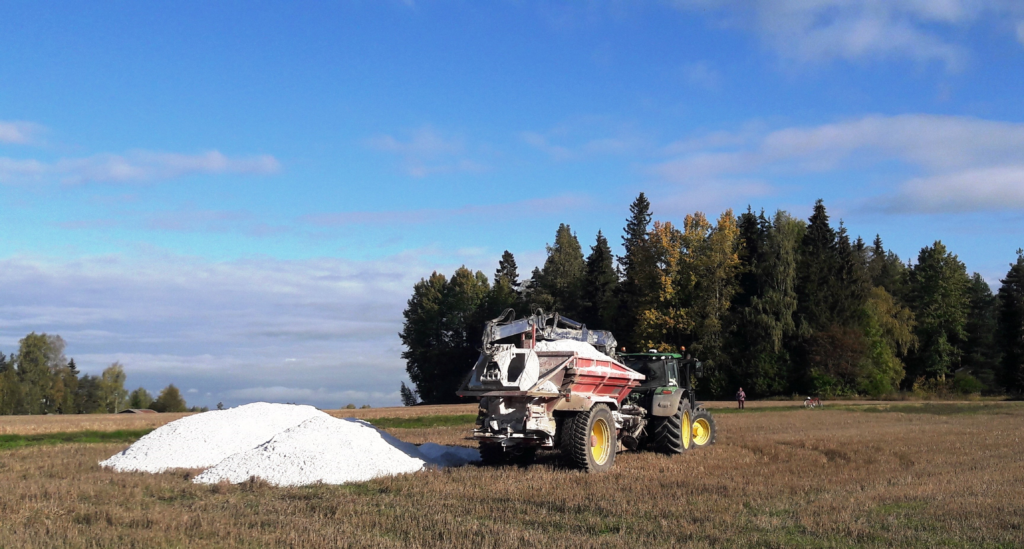Reduction of phosphourus load with Gypsum
The Role of Gypsum Soil Amendment in Reducing Coastal Phosphorus Loads

CHALLENGE DESCRIPTION Phosphorous (P) loading from agricultural fields in southern Finland is the largest threat to water quality and marine living resources in this area of the Baltic Sea. Decades of attempts to control P losses through traditional farming methods have proven inadequate. Still, runoff losses of P from agricultural fields are considered by HELCOM (Baltic Marine Environment Protection Commission) to be one of the major sources of nutrient load to the Archipelago Sea and Gulf of Finland. Traditional Best Management Practices such as filter strips, constructed treatment wetlands and fertilizer use reduction regimes, as well as transition to more environmentally friendly cultivation practices have proven insufficient to prevent eutrophication. The problem is serious, but not unique to Finnish waterways. Throughout the Baltic Sea catchment, efforts to reduce nutrient pollution from agriculture fall far behind more successful responses in areas such as developments in wastewater treatment and industrial processes. Both magnitudes and targeting of the traditional agri-environmental mitigation measures have been inadequate.

DESCRIPTION OF THE SOLUTION To tackle this problem, a new opportunity has emerged in recent years. With the help of gypsum (CaSO4+2H2O), the P leaching of fields can be cut quickly, as the effect of gypsum begins immediately after it dissolves into the soil. The effect is based on the increase in the ionic strength of the soil. When gypsum is applied, the water in the soil makes it to dissolve into calcium (Ca) and sulfate (SO4) ions. The increased ionic strength compresses the electrical double layer surrounding the soil particles thinner. Thereby, soil particles get closer to each other, thus forming larger aggregates. Ca ions also forms “bridges” between the soil particles. In addition, P gets attached onto soil particle surfaces, and therefore the release of P into water decreases. However, P remains available to plants to as high extent as before. Gypsum is not acid soluble and will not change the soil pH. Gypsum occurs in nature as a mineral which can be mined, but in Finland, large amounts of gypsum is available as a by-product of the phosphoric acid industry.
Gypsum treatment significantly reduces erosion and leaching of dissolved and soil-bound particulate P loss with runoff water. Dissolved reactive P (DRP) is directly available to algae, while particulate P (PP) affects eutrophication only when it dissolves in water. Gypsum-induced increase in ionic strength in arable soils also reduces the leaching of dissolved organic carbon (DOC). In addition to P and nitrogen (N), DOC is also an important factor in the eutrophication of water bodies. In general, carbon should be retained in agricultural soils as much as possible not only to maintain good soil structure improving water management and crop yields, but also to reduce GHG emissions. Finnish studies have shown that the use of gypsum as a soil amendment on agricultural fields may reduce P loading by even 50%, simultaneously re-using a waste product of fertilizer industry. According to current knowledge, the impact of gypsum treatment of fields on water quality lasts for about 5 years.

POSSIBILITY OF ADAPTING THE SOLUTION For a farmer, gypsum application is simple procedure as it can be applied with lime or manure spreading equipment found in virtually every farm. A sufficient amount of gypsum for water protection effects is 4 tons per hectare. It is recommended to apply the gypsum after harvest before autumn tillage. Gypsum is suitable for all field cultivation methods: ploughing, reduced tillage, direct sowing etc. In terms of water protection, the best result is achieved by using reduced tillage after the gypsum application, as this way the gypsum mixes more evenly in soil and is not exposed to surface leaching. In a gypsum application pilot carried out in 2016 in Finland 55 farmers ordered gypsum through a local agricultural dealer. The majority (80% of the farms) of the application works were carried out by an external contractor, and the rest with the farm’s own equipment. After gypsum treatment reduced tillage were used in 58% of the fields and 33% were ploughed. Nine out of ten farmers assessed that the different stages of gypsum application process – delivery, storage and transfer of gypsum within the farm, as well as the application itself – went well. More than 70% of the farmers considered that method was well suited in between the other fieldworks. Gypsum is best suited for clayey soils, and regional targeting is thus recommended for the method. In Finland, it has been estimated that potentially suitable area for the application of gypsum in the catchments of the Bothnian Sea, the Archipelago Sea and the Gulf of Finland is about 540,000 hectares, which is about a quarter of Finland’s entire field area. This estimate was made by delimiting areas for which gypsum treatment is not recommended due to e.g. the SO4 contained in the gypsum. It is not recommended to spread gypsum in lake catchments as an increase in SO4 content may increase the release of P from lake bottom sediments and consequently accelerate eutrophication. Also, groundwater formation areas are excluded. Gypsum is also not recommended for use on acid sulphate soils, as they have little effect on P leaching there. When ending up in the sea, SO4 causes no harm as seawater is naturally high in SO4.
| Authors of the solution desciption: | Jari Koskiaho |
| State of implementation of the solution: | in progress |

